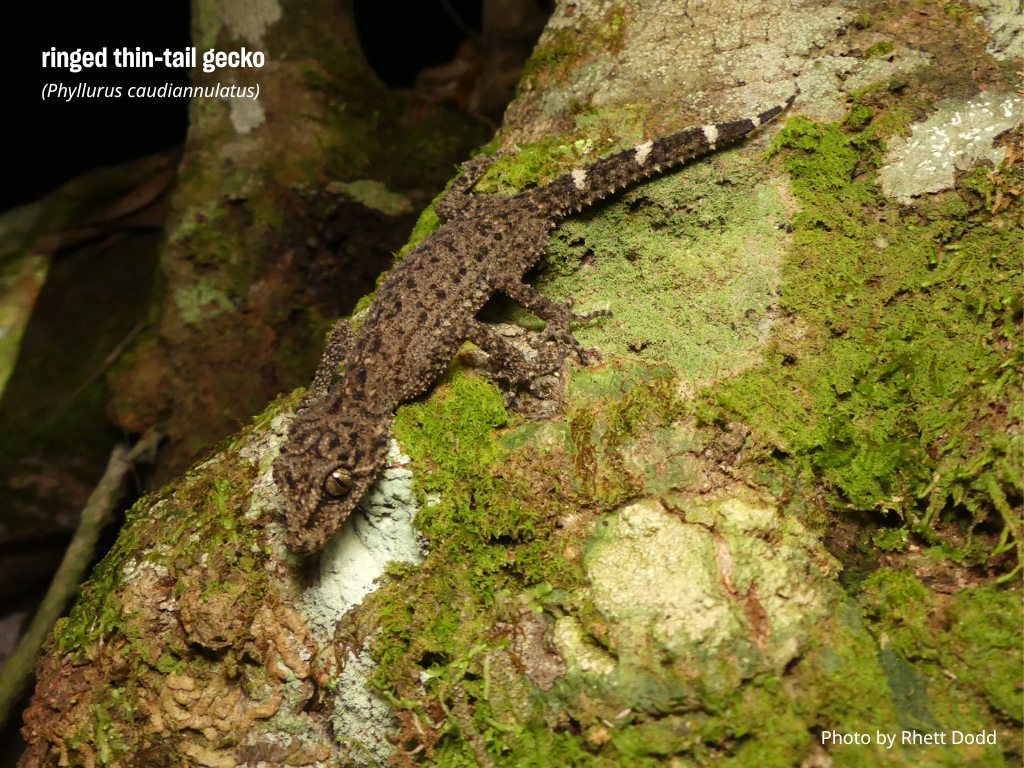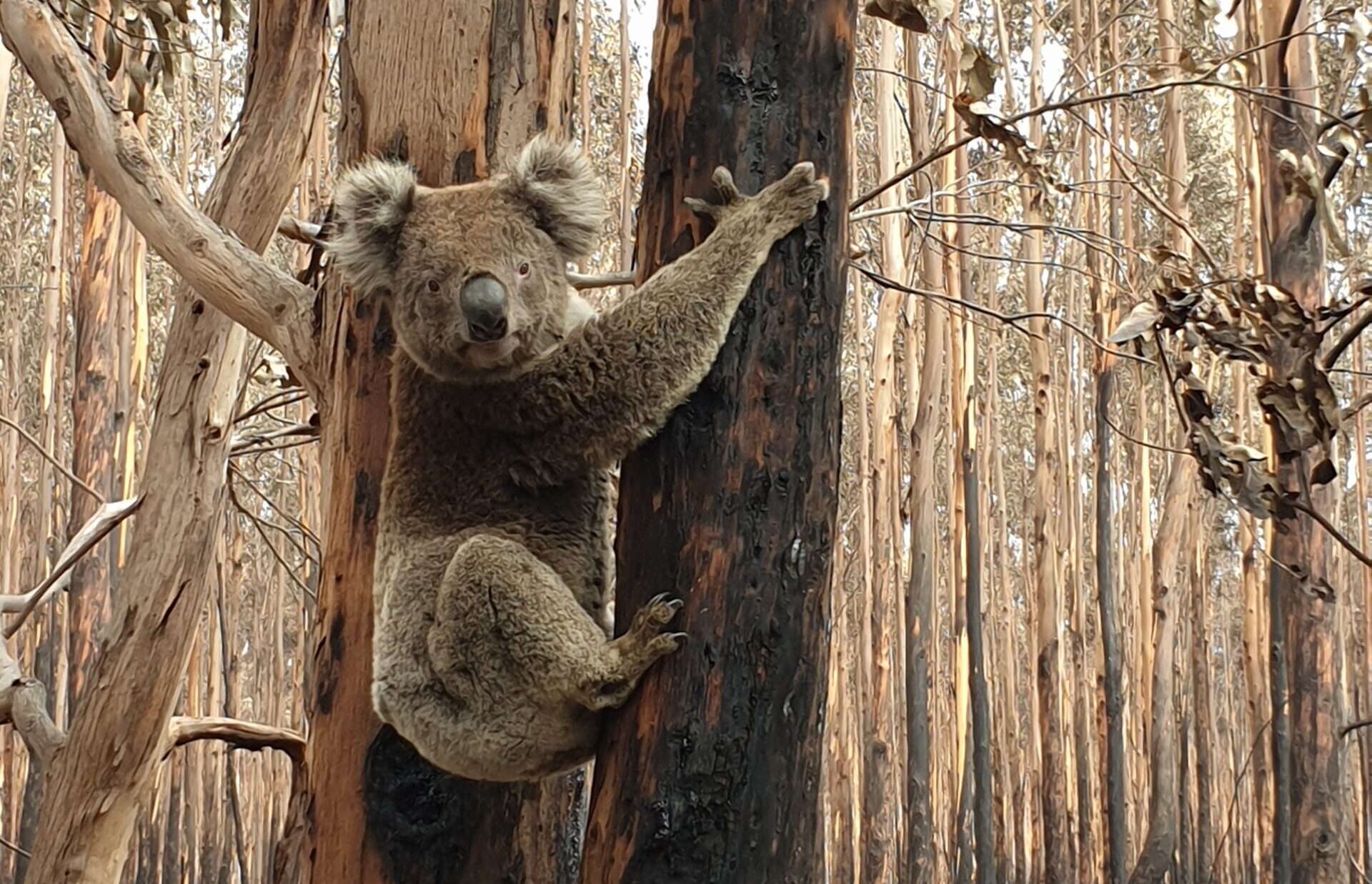Later this month, two Humane World for Animals Australia biologists, Dr Renae Charalambous and Lawrence Chlebeck, will travel to the ancient city of Samarkand, Uzbekistan to attend the 20th Meeting of the Conference of the Parties (CoP) for the Convention on the International Trade in Endangered Species (CITES). As strange...
Today is World Bee Day, a day for celebrating pollinators that inhabit our landscapes. Native Australian bees are not only spectacularly diverse and interesting but are also an essential part of nature, performing the critical ecosystem service of pollination, pollinating wildflowers, native vegetation and agricultural crops.
Ground-nesting bees
When you think of bees, the hive-living and social European honeybee may spring to mind or perhaps the bees you might see coming and going from backyard bee hotels. However, did you know that only 30 per cent of native bee species nest in vegetation cavities such as tree trunks, hollow reeds or branches?
Many native bees are often forgotten as they can go easily unnoticed —those that nest underground! Interestingly, it is these ground-nesting bees that make up the majority (70%) of all Australian native bee species. Like most species that are out of sight, it can lead to these species also being out of mind, underscored by the limited research internationally on ground-nesting bees.
Let’s take a look *bee-hind* the scenes of ground-nesting bees and uncover the secrets of these species and how we can give them a helping hand in our backyards.
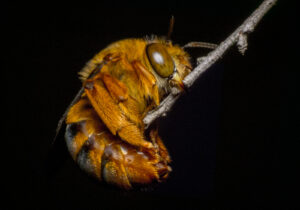 Above: Teddy bear bee. Photo: James Niland via Flickr
Above: Teddy bear bee. Photo: James Niland via Flickr
The burrows of ground-nesting bees
The burrows of native bees may be unsuspecting and even difficult to spot with the naked eye. Nest entrances can be protected either by a conical mound, tall pillar of soil or a scattering of soil on the surface.
Some ground-nesting bees have shallow burrows while others have advanced underground systems with different branches totalling more than 500cm in depth.
While most ground-nesting bees are ‘single mothers’, aggregations of burrows made by females raising brood (young) together in the same area can also occur as demonstrated by female Dawson’s burrowing bees (Amegilla dawsoni) in arid Western Australia (pictured below).
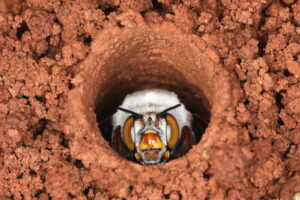 Above: A female Dawson’s burrowing bee. Photo: Kerry Stuart
Above: A female Dawson’s burrowing bee. Photo: Kerry Stuart
What threatens ground-nesting bees?
Activities that disturb the ground such as land-clearing, development and farming pose obvious threat to ground-nesting bees.
On a micro scale, covering all areas of a garden with grass or mulch can limit the suitable conditions ground-nesting bees need to build their nests.
 Above: Ground-nesting native Euryglossa bee species in Queensland. Photo: Laurence R Sanders
Above: Ground-nesting native Euryglossa bee species in Queensland. Photo: Laurence R Sanders
Which native bee species are ground-nesting?
Australian ground-nesting bee species typically range between 5–13mm in length. These include members of the Amegilla genus (blue-banded, teddy bear and Dawson’s burrowing bees), Lasioglossum genus, Euryglossa genus and more.
 Above: Blue banded bee species
Above: Blue banded bee species
How can I support ground-nesting bees?
From urban areas to regional properties, native bee presence can be encouraged. Even if you live in a city, you can still make efforts in your backyard garden or courtyard to support native bees.
Here are some easy tips to help ground-nesting bees in your backyard:
- Leave a section of your backyard bare for ground nesting bees. Keep a section of your backyard free of mulch, pavers or grass. This can provide ground-nesting bees locations to build their nests.
- Create clay nesting boxes using PVC pipe and clay. This can provided habitat for ground-nesting species like blue-banded bees. Learn how to make one here.
- Create a bee-friendly garden by planting or keeping potted native flowers that bloom throughout the year. Learn more tips here from our bee blog.
- Submit your ground-nesting bee sightings to the iNaturalist ground-nesting bee project. The best photos are those demonstrating a ground-nesting bee travelling to or from their nest entrance. Your photos can contribute to international research through the Ground Nesting Bees iNaturalist project.
This World Bee Day let’s remember that protecting pollinators also means looking bee-low the surface and giving even the most inconspicuous bees a place to call home.
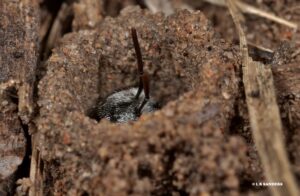
Above: Ground-nesting native Lipotriches bee species. Photo: Laurence R Sanders
Cover image: A female Dawson’s burrowing bee. Photo: Kerry Stuart

